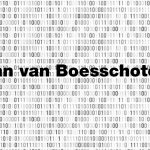The Irish government has committed to a review of its datacentre growth promotion strategy as part of a push to cut the country’s overall greenhouse gas emissions by 51% by 2030, as detailed in its updated 2021 Climate Action Plan.
The 208-page document lists a number of actions the government is committed to taking to meet its emissions goal, but claims achieving it will be a challenge given the current growth rate of the country’s datacentre sector.
According to the document’s figures, the datacentre sector is forecast to grow by up to 9TWh (terawatt-hours) in 2030, putting it on course to consume around 23% of the country’s overall energy demand by this time.
“In Ireland, total electricity demand over the next 10 years is forecast to grow by between 19% and 50%, largely driven by new large energy users, many of which are datacentres, based on existing policies and strategies,” the document stated. “In the high demand scenario…electricity demand will almost double by 2030, while electricity emissions are to be reduced by 60-80% at the same time.”
To minimise the environmental impact of the country’s growing energy demands, the Irish government has revised up its renewable energy usage target by 10 percentage points by committing to ensure that 80% of Ireland’s energy comes from renewable sources by 2030.
This measure is described as “among the most important” within the document, given it will also pave the way for the country’s transport and heating sectors to become electrified, which will bring benefits from an emissions-cutting perspective.
However, the report goes on to acknowledge that the predicted future growth of the country’s datacentre market “clearly represents a challenge to Ireland’s emissions targets” so a review of its strategy for the sector will be necessary.
“The government will review its strategy on datacentres to ensure that growth of such users can only happen in alignment with our sectoral emissions ceilings and renewable energy targets,” the document stated.
This includes a review of a previous strategy document, dating back to 2018, about the steps the government said it would take to promote the datacentre sector’s continued growth.
“The impact of datacentre growth on security of supply will also be considered. Further regulatory measures will be considered to manage demand from large users, such as datacentres, in the context of climate targets and future network needs,” the document added.
The document also makes reference to the need for the Irish national grid to be reinforced and expanded – through the addition of new lines, substations and renewable energy generation sources – in support of the country’s climate targets.
It also discusses the need to “unlock the flexibility” of large electricity demand users, including datacentres, which could refer to the roll-out of demand-generation setups or encouraging operators to run more power-intensive workloads outside of peak electricity demand periods.
“Energy demand, including datacentres, will be expected to operate within sectoral emissions ceilings and further signals will be required to locate demand where existing or future electricity grid [capacity] is available and close to renewable energy generation,” the document added. “Research and development to put Ireland on a path to net-zero carbon datacentres will be required.”
As previously detailed by Computer Weekly, Ireland has developed into one of Europe’s biggest hyperscale datacentre hubs in recent years, prompting concerns about the environmental and energy security impacts the uptick in server farms across the country is having.
The situation has been the subject of consultations by the national grid operator and the country’s energy regulators, while the government has also come under political pressure to introduce measures to slow the pace of datacentre developments, particularly around Dublin.















